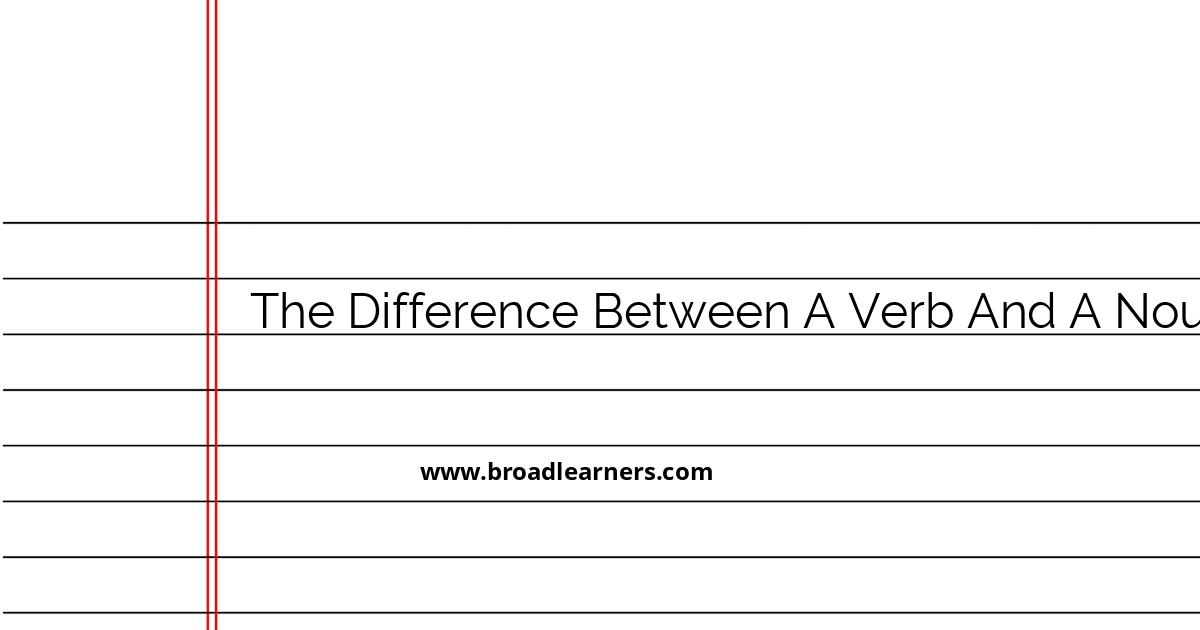Verbs and nouns are fundamental parts of speech in the English language, each serving a unique purpose. Understanding the difference between them is essential for constructing meaningful sentences. In this article, we will explore the differences between verbs and nouns, explaining their roles in language and providing examples to illustrate their usage.
- Noun:
- A noun is a word that identifies a person, place, thing, or idea. Nouns are often the subject of a sentence and can be singular or plural.
- Verb:
- A verb is a word that describes an action, occurrence, or state of being. Verbs are the action words of a sentence and express what the subject is doing.
Understanding Nouns
Nouns can be categorized into different types such as common nouns, proper nouns, abstract nouns, and collective nouns:
- Common Noun: Refers to a general item or concept. Example: The dog barked loudly. Here, "dog" is a common noun as it refers to the general category of animals.
- Proper Noun: Specifies the name of a person, place, or organization. Example: Paris is a beautiful city. "Paris" is a proper noun as it specifies the name of a particular city.
- Abstract Noun: Describes a quality or idea. Example: Freedom is priceless. In this sentence, "freedom" is an abstract noun that represents an idea.
- Collective Noun: Refers to a group. Example: The team won the match. "Team" is a collective noun representing a group of people.
Understanding Verbs
Verbs are just as diverse and can be classified into action verbs, linking verbs, helping verbs, transitive and intransitive verbs:
- Action Verb: Indicates an action. Example: The child runs quickly. "Runs" is an action verb as it denotes what the child is doing.
- Linking Verb: Connects the subject with additional information. Example: She is a doctor. "Is" in this sentence links the subject, "she," with more information.
- Helping Verb: Assists the main verb. Example: She has finished her work. Here, "has" is a helping verb, assisting "finished" in constructing the present perfect tense.
- Transitive Verb: Requires a direct object. Example: She read the book. "Read" is transitive, as it needs "the book" to complete its meaning.
- Intransitive Verb: Does not require a direct object. Example: The flowers bloomed. In this case, "bloomed" does not need a direct object.
Examples of Nouns and Verbs in Sentences
The cat (noun) plays (verb) in the garden.
In this example, "cat" is a noun, as it is the subject performing the action, while "plays" is the verb describing the activity.
David (noun) eats (verb) lunch.
Here, "David" is a proper noun representing a specific person, and "eats" serves as the verb indicating the action.
The tree (noun) grew (verb) taller.
"Tree" acts as a noun in the sentence, while "grew" is the verb outlining the action.
Nouns and verbs are essential for structuring sentences and expressing ideas clearly in both written and spoken communication. By understanding their distinct roles, you can enhance your language skills and ensure that your sentences convey the intended meaning effectively.

Did I miss anything? Respond below